Harbin Weather: Temperature, clothing tips, recommended tourist spots, and special events
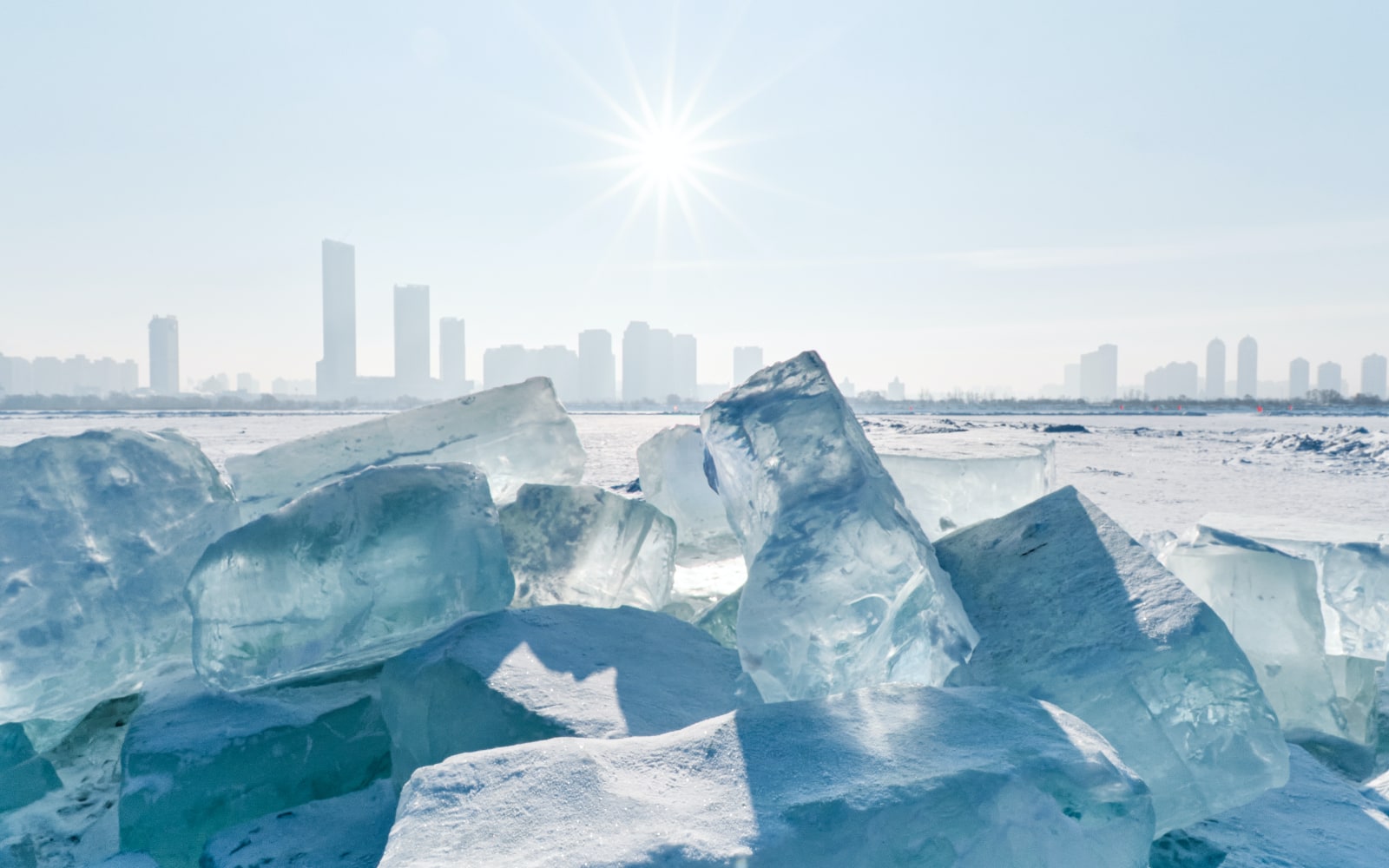
How is the weather in Harbin?
Harbin is located in the northeastern part of Northeast Plain of China and the southern part of Heilongjiang Province. Geographical location is between 125°42′-130°10′E and 44°04′-46°40′N. It’s flat land out there, and the land is open. And there is also a Songhua River flowing through the city which made the city look quite beautiful.
Harbin has a mid-temperate continental monsoon climate. Spring and autumn are short seasons, and during this kind of transition of seasons, the temperatures are not stable either. It is also windy, and there is not a lot of rain. Then, in summer, a combination of the Pacific subtropical high-pressure system and southeastern winds causes it to be cool, but only for a short time. Mongolian high-pressure system and westerly winds make it long, cold and dry, it is: in winter. There is a big Effect of these different types of whether in different seasons for a person who lives there as well as also for a person who goes over there for traveling.
Harbin Average Climate by Month (historical data)
| Jan | Feb | Mar | Apr | May | Jun | Jul | Aug | Sep | Oct | Nov | Dec | |
| High (℃) | -11 | -4 | 9 | 15 | 23 | 28 | 27 | 26 | 24 | 15 | -3 | -11 |
| High(℉) | 12.2 | 24.8 | 48.2 | 59 | 73.4 | 82.4 | 80.6 | 78.8 | 75.2 | 59 | 26.6 | 12.2 |
| Low (℃) | -24 | -17 | -5 | 1 | 8 | 16 | 19 | 18 | 11 | 2 | -13 | -22 |
| Low(℉) | -11.2 | 1.4 | 23 | 33.8 | 46.4 | 60.8 | 66.2 | 64.4 | 51.8 | 35.6 | 8.6 | -7.6 |
| Rain (mm) | 0 | 1 | 0 | 80.9 | 168.5 | 40.2 | 16.6 | 43.4 | 0 | 11.6 | 14.9 | 0 |
The above data show the monthly averages for the past year. For more accurate and detailed weather information about Harbin, please consult professional meteorological websites or official weather agencies.
A review of Harbin's monthly average temperatures reveals its distinct four seasons. January is the coldest month, with average temperatures around -20°C. As spring approaches, temperatures gradually rise, reaching -5°C in March. April marks the beginning of spring as temperatures finally climb above 0°C. May and June see further warming to approximately 13°C and 20°C respectively.
July brings summer peaks with average temperatures of 25°C - relatively mild compared to southern Chinese cities but notably warm for Harbin. August maintains warm temperatures around 23°C. September initiates a sharp temperature decline to about 14°C, while October drops to around 5°C, signaling autumn's arrival. November and December see temperatures fall below freezing again, dropping to approximately -6°C and -15°C respectively, as Harbin enters its extended winter period.
When is the best time to travel to Harbin?
We recommend that the best times to travel to Harbin are from June to August and from December to February of the following year.
Spring (March - May)
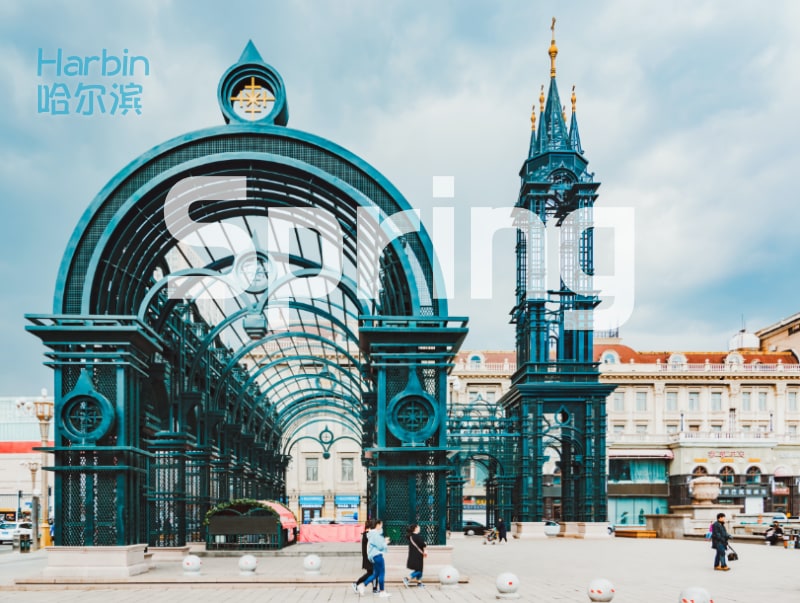
Temperature: The average temperature in spring ranges from around -10 °C to 3 °C. The average daytime temperature can reach around 3 °C, but at night, the temperature may still drop below -10 °C. In March, the average maximum temperature might be around 0 °C. However, as time progresses, by May, the maximum temperature can reach around 20 °C. There is a large temperature difference between day and night, often exceeding 10 °C. During the day under the sunlight, people might feel a bit of warmth, but the cold at night remains biting. Windy days are also relatively frequent, with strong winds howling through the streets and alleys of the city, raising dust.
Clothing Recommendations: Layering is key, with lightweight sweaters or hoodies serving as versatile base layers. Windproof jackets or trench coats are essential for protection against strong gusts while providing warmth. Scarves are indispensable accessories, shielding the neck from the chill during pronounced temperature fluctuations between morning and evening.
Suggested Activities and Attractions: Famous attractions such as Central Street and the Saint Sophia Church are worth visiting. Sun Island's flower exhibitions draw numerous visitors eager to witness the vibrant blossoms. The Siberian Tiger Park is also a great place to visit in spring. After the cold winter, the tigers are more active in the warm sunlight, playing around or lazily basking in the sun, showing their majestic and cute sides.
Special Events: The Harbin Spring Music Festival is a cultural highlight of the season. This event brings together musicians from various regions, offering a diverse range of performances from classical to contemporary, enriching the city's cultural atmosphere.
Summer (June - August)
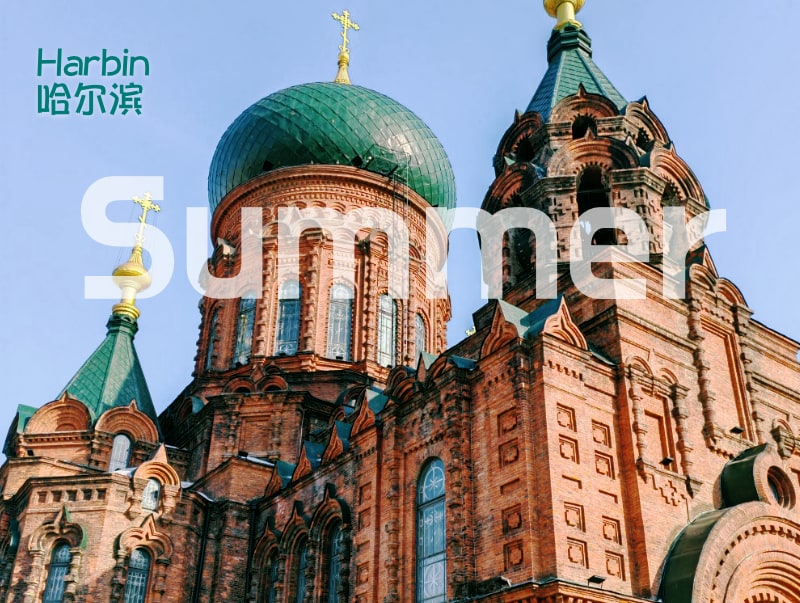
Temperature: Harbin's summer is characterized by warm, humid conditions with significant temperature variations between day and night. This season sees concentrated rainfall, which not only brings refreshing coolness to the city but also causes a rise in the Songhua River's water level. July is typically the hottest month, with average temperatures ranging from 19°C to 23°C. The increased humidity can make it feel warmer than the actual temperature suggests. Despite this, Harbin's summers are notably cooler compared to southern Chinese cities.
Clothing Recommendations: Light and breathable clothing is the main choice in summer. Visitors are advised to pack short-sleeved t-shirts, thin shirts, shorts, and dresses. It's also wise to bring a few light jackets or long pants to accommodate rapid temperature changes. Sun protection, including hats and umbrellas, is crucial.
Suggested Activities and Attractions: The banks of the Songhua River are a popular place for people to escape the heat in summer. You can take a cruise on the river bank to enjoy the scenery on both sides and feel the pleasant breeze. Central Street transforms into a haven of refreshment and culinary delights, with numerous ice cream parlors offering respite from the heat. The street's diverse architectural styles, particularly the European-influenced buildings, provide a picturesque backdrop for leisurely strolls.
Special Events: The Harbin Beer Festival is a highlight of the summer season. This lively event brings together locals and tourists to enjoy a wide variety of beers, accompanied by street food, live music, and entertainment, embodying the city's vibrant summer spirit.
Autumn (September - October)
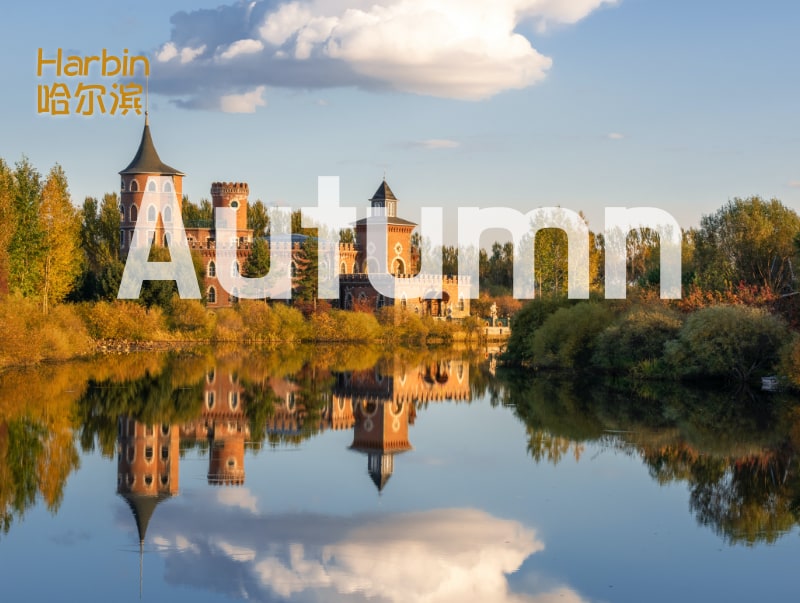
Temperature: Autumn in Harbin is marked by rapidly declining temperatures and reduced rainfall. Average temperatures in September hover around 10°C, dropping to near 0°C in northern areas and 2-4°C in southern regions by October. The season showcases spectacular foliage, with trees adorned in hues of gold and crimson, creating a breathtaking landscape.
Clothing Recommendations: As temperatures fall, wardrobe adjustments become necessary. Long-sleeved shirts and sweaters are recommended, along with light jackets or coats for layering. As autumn progresses, thicker coats, scarves, and gloves become essential.
Suggested Activities and Attractions: In autumn, you can visit attractions such as the Volga Manor and the Siberian Tiger Park to enjoy the natural scenery of autumn. The Laodaowai Chinese - Baroque Block shows more historical charm under the cover of autumn. The ancient buildings, dotted with golden leaves, show a unique vicissitudes of beauty. Each bluestone slab and carved door and window here carries the memory of history, making people immersed in the past.
Special Events: In the surrounding rural areas, people hold various harvest celebration ceremonies in autumn, such as bustling agricultural product exhibitions and interesting farming experience activities. Tourists can participate in them and taste fresh agricultural products.
Winter (November to February)
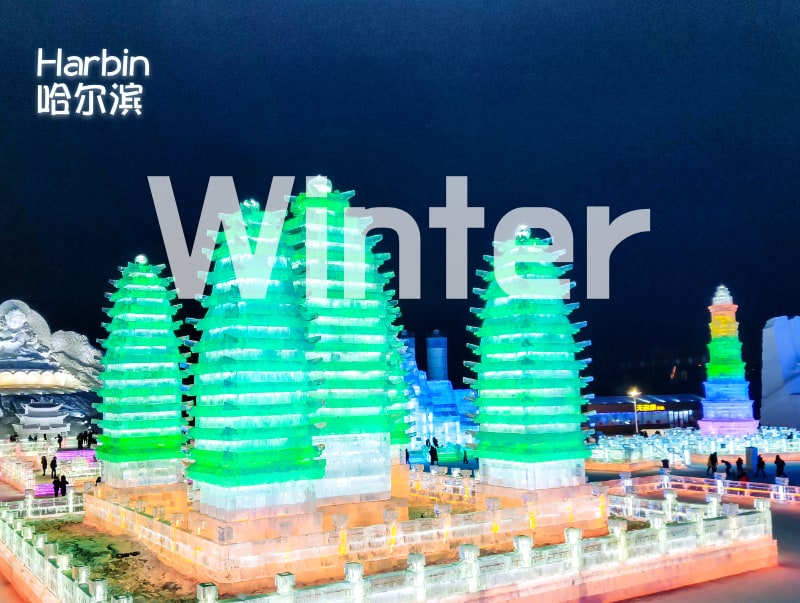
Temperature: Winter is the coldest season in Harbin and lasts for a long time. The average temperature in January ranges from -15 °C to -30 °C, and the lowest historical temperature has reached -37.7 °C. Snowstorms and biting winds are common occurrences. The temperature difference between day and night is less pronounced during winter, as the overall temperature remains consistently low. However, sunny days can feel slightly warmer than nights. The freezing of the Songhua River transforms its surface into a unique recreational space and transportation route for locals.
Clothing Recommendations: Dressing for Harbin's winter requires serious consideration of warmth. Thick cotton coats and down jackets are essential outer layers for effectively combating the severe cold. Thermal underwear, insulated pants, and snow boots are crucial for maintaining body heat. Accessories such as hats, gloves, and scarves should be chosen for their ability to provide comprehensive protection for the head, hands, and neck, with materials like wool and down being particularly effective.
Suggested Activities and Attractions: The Ice and Snow World is a landmark tourist attraction in Harbin in winter. There are large - scale and variously - shaped ice sculpture works here, which are dreamy under the illumination of colorful lights. You can also engage in ice-skating, ice-fishing and other ice-based activities on the ice surface of the Songhua River. The Yabuli Ski Resort is a paradise for ski lovers. There are high-quality ski slopes here. Both beginners and professional athletes can find suitable slopes.
Special Events: The Harbin International Ice and Snow Festival is the grandest festival in winter. In addition, there are many other special activities in winter in Harbin, such as the Ice-breaking Festival, Asian Winter Games series events, etc., allowing you to enjoy the beautiful scenery and also feel the ice and snow culture of Harbin. In winter in Harbin, you can also taste various hot winter delicacies, such as iron - pot stew, grilled cold noodles, etc., and experience the Northeast bathing culture, feeling the warmth and enthusiasm of Harbin.
By understanding the climate patterns and following appropriate clothing and activity recommendations, visitors can fully appreciate the beauty and culture of this historic northeastern Chinese city, regardless of when they choose to visit.
Drop us a line and we'll connect you with the top China expert in no time!
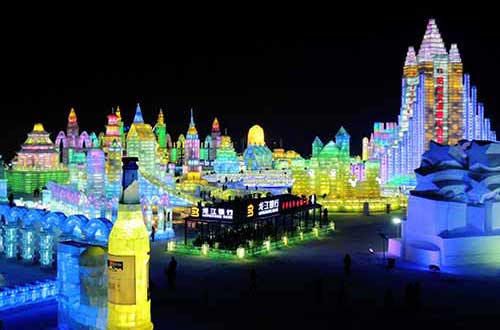 Harbin International Ice and Snow Festival
Harbin International Ice and Snow Festival 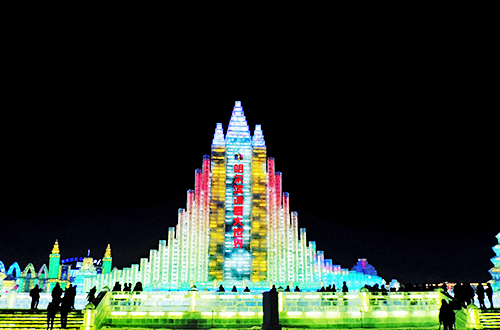 Harbin City Highlights and Ice Festival Tour
Harbin City Highlights and Ice Festival Tour 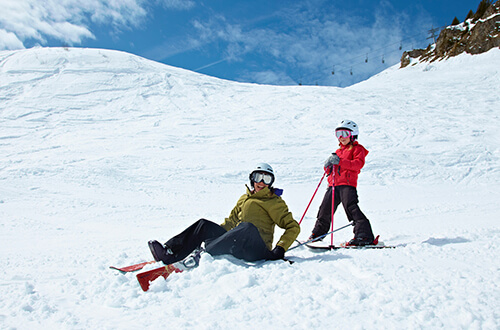 Harbin Skiing and Ice Festival Adventure
Harbin Skiing and Ice Festival Adventure 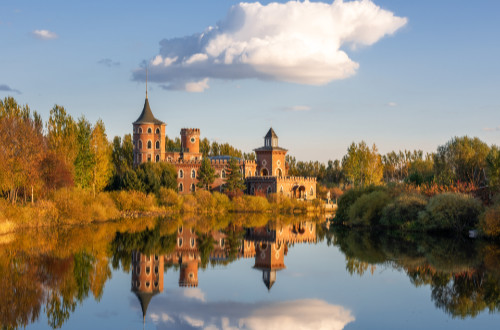 3 Days Harbin Highlights Tour in Summer
3 Days Harbin Highlights Tour in Summer